EXIF:
Camera: Nikon D800
Lens: Nikon 16-35mm @ 22mm
Configuration: Standard Mount
Extension Tubes: no
Image Stack: no
Stackware: n/a
Aperture: f/11
Shutter Speed: 1/30 sec
ISO: 1600
Flash: no
Stabilization: Handheld
Subject Size: 18 cm
Species: Fire Salamander Salamandra salamandra
Location: Denkendorf, Baden-Württemberg, Germany
Every few years I get to visit family in Denkendorf, Germany. It’s a small town in the green rolling hills of southwestern Germany. Though the region is densely populated by humans, the Germans have engineered the countryside so that nature is still present everywhere. Even the largest cities are surrounded by stretches of forest and fields. The footpath system is also intricately developed, such that you can theoretically get to any 2 points in the country by foot without having to walk on a main road. Each day I’d set out for a wide-ranging hike through the many tracts of forest surrounding Denkendorf. The casual observer doesn’t notice that these forests are heavily logged, but the selection cut method is performed very scientifically so that nature can persist. From March to May is the best time to find amphibians because it’s their breeding season, and the Summer heat hasn’t sent them underground yet. At this time of year the forest is extremely moist from frequent rain, and tiny streams are frequent. If you look close enough you’ll discover that streams are full of the tiny salamander larva, which were live birthed in the past weeks. I’ve been infatuated with Fire Salamanders ever since I found them when I was a child. Though they’re abundant in this region of Germany, elsewhere in Europe Fire Salamanders are in dire decline and some populations are already extinct. The culprit is a fungus that essentially destroys their skin called Batrachochytrium salamandrivorans. This is a new a separate fungus from the already known amphibian killer, Chytrid.
A wide-angle lens is essential for “animal in its habitat” compositions. The Nikon 16-35mm is a fine lens for this purpose because it covers the focal lengths most needed. It also has effective vibration control, which contributed to keeping this photo sharp at only 1/30th sec. For Nikon DX cameras the 10-24mm zoom lens is the equivalent.

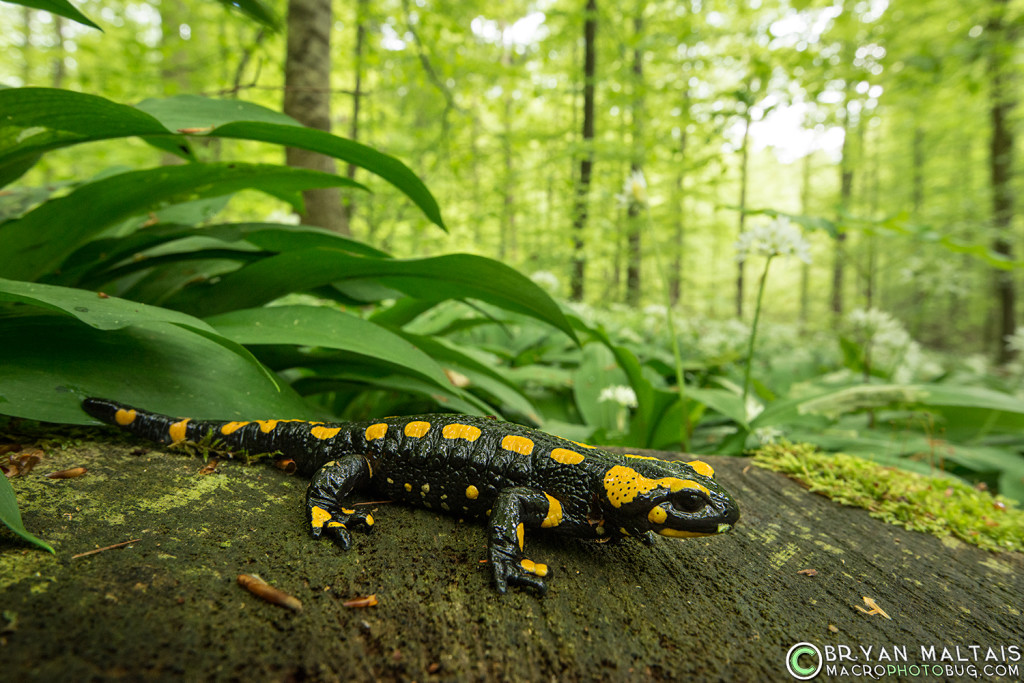
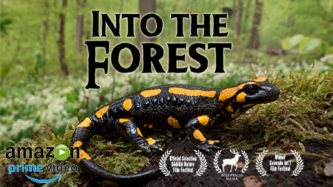

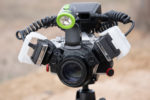
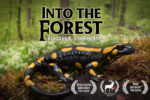
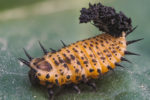
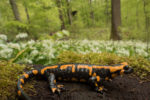
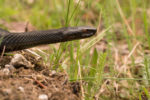
Hi there Bryan, and thanks for your website! My son (Jackson, aged eight, lives in the UK) is a huge fan of your research and we have watched the movie Into the Forest together. Since he really wants to see a Fire salamander, more than anything (!), we will be visiting the Black Forest this April, with the aim to find them. (In the UK we have already found Palmate and Smooth newts, two out of three of our native snakes, and Sand lizards). He would really like to ask if you have any advice on where to look for Fire salamanders in SW Germany or perhaps even any local amphibian research groups who would be able to help? Thanks in advance – we really appreciate your work. Thomas and Jackson (8)
Hi Thomas and Jackson, Fire Salamanders do live in the black forest, but only in pockets of broadleaf deciduous forest. The Black Forest is primarily high elevation coniferous forest (pine trees), which isn’t ideal Fire Salamander habitat. However, they’re very common in most any deciduous forest throughout SW Germany near small fishless streams and pools. In this habitat you’ll also find more of the other amphibian species like Alpine Newts. Because I know central Baden-Württemberg the best, I can recommend Naturpark Schönbuch and Silberwald in Stuttgart as ideal places. It’s not “where”, but when that’s most important. They emerge at night when it rains. By day you could be surrounded by hundreds of Fire Salamanders, but not see them.